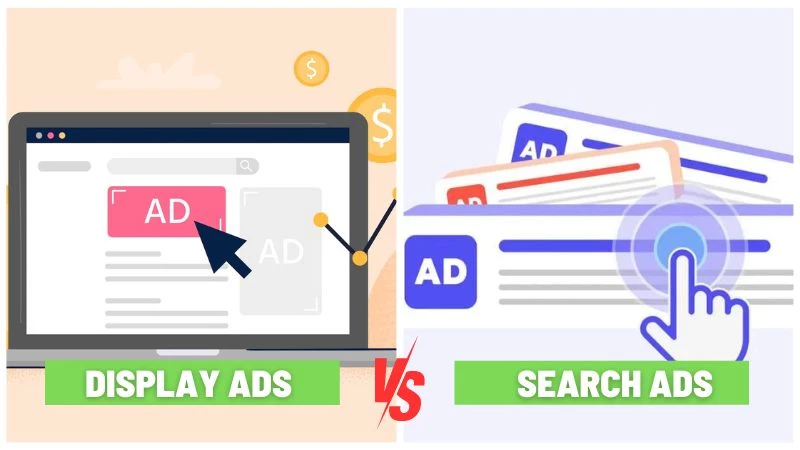Display ads vs search ads: which should you use? Both display and search ads can be effective tools in a digital marketer's advertising arsenal. But they serve different purposes in attracting consumers along the buyer's journey. In this post, we’ll analyze the differences between display and search ads and when to use one vs the other for optimal impact and return on ad spend. With the right ad strategy incorporating both formats at different consumer touchpoints, brands can drive awareness, interest, and conversions across the entire customer journey - from discovery to purchase and beyond. We’ll explore how display and search ads complement one another if used properly, so you can develop an omni-channel ad approach that connects with consumers at precisely the right moments.
Introducing about search ads vs display ads
Before diving into when to use each type of ad, it's important to understand what exactly search and display ads are.
Search Ads
Search ads are a form of pay-per-click (PPC) advertising that appear on search engine results pages (SERPs) when a user searches for specific keywords or phrases. With search ads, advertisers bid for ad placement and only pay when a user clicks on their ad.
For example, if you search for "print on demand tumblers" on Google, you may see text-based search ads above or below the organic search results, like this:
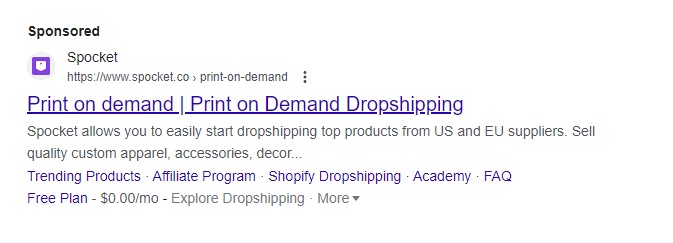
These search ads contain a headline, display URL, and description designed to get users to click through to the advertiser's website. Search ads may also contain extensions like location, call button, etc. to provide supplemental information.
Three key factors determine search ad visibility, rank, and cost:
- Bid Amount - Advertisers bid on keywords to try placing ads higher up the page. Higher bids lead to higher ad positions.
- Quality Score - This score rates the expected clickthrough rate of an ad based on historical performance. Higher quality scores improve ad rank.
- Cost-Per-Click (CPC) - This is the amount an advertiser pays only when a user clicks their ad. CPC depends largely on the bid and quality score.
In summary, search ads help capture consumer intent and interest as they research solutions to their needs on search engines. Optimizing these components allows brands to reach the right searchers, at the right time, with relevant messaging.
Display Ads
Display advertising is a form of digital advertising that encompasses visual banner ads, native ads, video ads, and more - served across the web on various sites and platforms.
Unlike search ads that appear in response to keyword searches, display advertising reaches users as they naturally browse sites and content. It is considered a "push" advertising approach (vs "pull" with search ads).
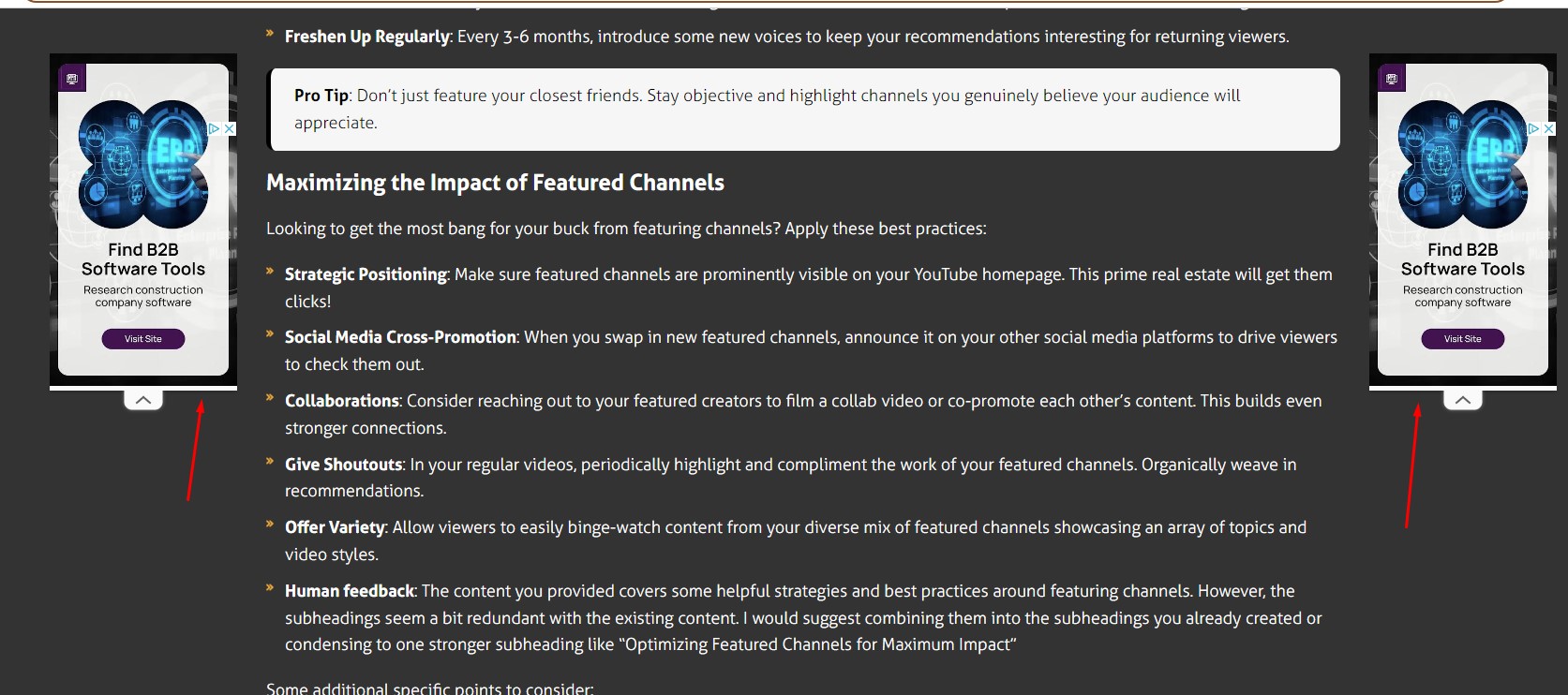
Some examples of where display ads can be shown:
- Banner ads - Graphical ads above, below, or on the sides of content on publishers' sites across the web. For example on news sites, blogs, entertainment sites, etc.
- Social media feeds - Visual/video ads can appear natively inserted between regular user content on platforms like Facebook, Instagram, Twitter, Snapchat etc.
- Video ads - Short video commercials preceding or interrupting online video content.
- Email ads - Text, image, or video ads inserted into commercial inboxes based on user data.
The advantage of display advertising is it allows brands to increase awareness and visibility at scale, exposing your message to users through visual storytelling vs plain text. Display gives you reach across millions of sites.
Marketers can target display ads bases on user attributes like demographics, interests, behaviors, browsing habits, and more to laser-focus different ads to different audiences for better targeting.
Display ads offer expansive reach and visual storytelling, great for brand building. The tradeoff is lower direct-response rates vs search ads. Using both together creates an effective, full-funnel ad strategy.
The Benefit of Search ads
Search ads come with several key advantages, making them a powerful addition to digital marketing strategies:
Laser-Focused Targeting
With search ads, advertisers can target users searching for specific keywords and phrases relevant to their business. This level of precision attracts highly interested users who have intent to research or purchase products/services like yours.
For example, a shoe brand can target "buy running shoes" to reach users actively looking for footwear. This is more effective than broadly targeting "shoes" which captures casual browsers too.
Granular Location & Demographic Targeting
Beyond keywords, search ads allow layering on location, language, age, gender and affinity targeting for further audience refinement. Brands can focus ads on different personas across various stages of the buyer's journey.
Lower Cost Per Lead/Customer
Because search ads deliver such qualified traffic, they can drive conversions at a lower customer acquisition cost versus other formats like display. Consumers finding you via search ads already have buying intent, making them more likely to convert.
Quick Impact on Conversion Rates
The traffic driven by search ads converts at significantly higher rates immediately, given the qualification criteria and intent. This means brands see an almost instant uplift in conversions, making search ads perfect for short-term goals.
The precision targeting, highly qualified traffic, and fast conversions make search ads an efficient customer acquisition channel for many businesses. When layered into a broader strategy, search ads can engage consumers at the critical research & conversion phases.
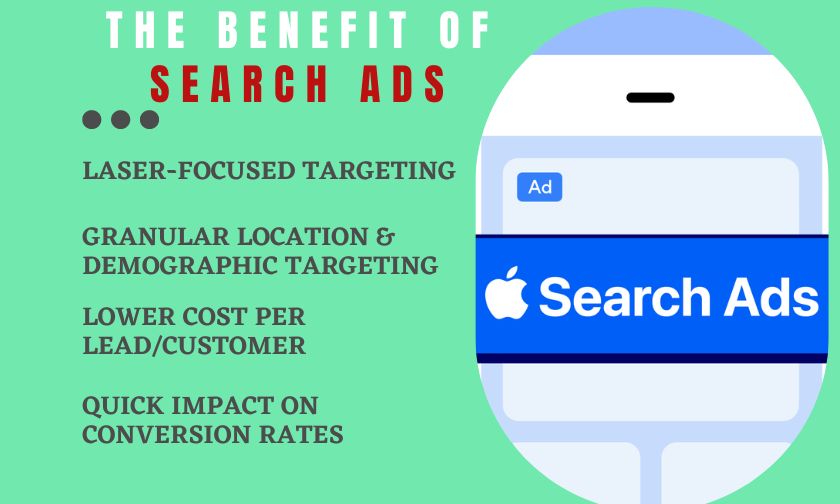
The Benefit of Display Ads
Display advertising offers several unique benefits that make it a key part of a rounded media mix:
Visual Storytelling
Display ads allow brands to tell visual stories and communicate key messages through eye-catching images, video, illustrations and more. This makes display perfectly suited for products that are visual in nature - fashion, autos, consumer electronics, travel and so on. Even for less visual products, display ads can use graphics, animations and bold text to capture attention.
Niche and Luxury Targeting
Display ads provide access to ultra-targeted premium audiences across the web. Using advanced data and inventory sources, brands can re-engage known customers or find net-new audiences similar to their best customers. Targeting can get very niche with custom website lists, unique datasets and more. This helps connect with hard-to-reach audiences.
Brand Awareness at Scale
Simple display ads focused on brand-building allow increased exposure for logos, popular products, slogans and more to drive awareness. Display provides extensive reach across millions of sites at once, helping brands get in front of new audiences for attention and recall.
Display advertising should have visual appeal, be targeted utilizing rich data signals, and keep messaging simple. When executed right, display helps storytell at scale to cold and warm audiences alike increasing interest across the entire customer journey.
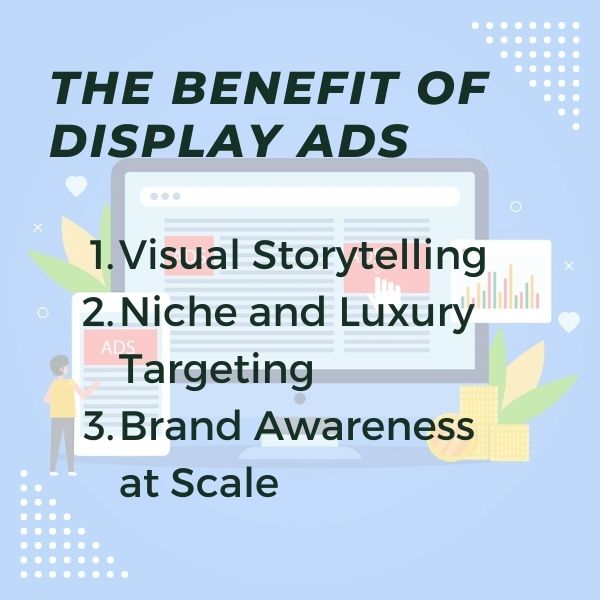
Want to explore what budget you may need to implement a robust Google Ads strategy encompassing both search and display? Check out our guide for how much does Google Ads cost and how pricing is calculated based on your goals.
Comparing the average metrics for search advertising vs display advertising
When evaluating the performance of search and display advertising, there are a few key metrics to compare:
Clickthrough Rate (CTR)
- Search ads tend to have higher CTRs around 2-3% on average, as users are actively searching for products/services.
- Display ads see lower CTRs, often less than 1%, as they reach users browsing content less relevant to the ads.
Cost-Per-Click (CPC)
- Search ad CPCs are generally higher due to direct targeting, costing advertisers $1-5 per click typically.
- Display ads have lower CPCs on average since they reach a more general audience, usually $0.30-2 per click.
Conversion Rates
- Search ads convert better with users at the purchasing stage, seeing conversion rates around 2-4% usually.
- Display ads target earlier in the funnel so have lower conversion rates, around 0.5-1.5% on average.
Search ads see better engagement and conversions metrics owing to direct targeting of user intent. Display ads offer wider reach to less targeted audiences, reflected in broader metrics. Evaluating both ad types based on campaign goals is key.
How Do Search Ads vs Display Ads Work Together?
While search and display ads target users at different stages of the buyer journey, using them together creates a powerful, omni-channel advertising strategy. Each format plays a key role:
Priming with Display Ads
Display ads build brand awareness with expansive reach across the web. Seeing display ads across sites familiarizes audiences with your branding, offerings and messaging - priming them for future purchases.
Driving Action with Search Ads
When users have a need and head to a search engine, your search ads are ready to provide solutions, capturing that user intent. Search gives you the chance to re-engage audiences primed by display ads.
Synergistic Effect
Several studies have shown strong synergies from combining both ad types:
- 27% of searchers look for a brand after seeing related display ads
- 59% higher conversions when someone sees a display ad first before searching
In essence, display ads trigger subconscious brand recognition, so when people are looking to make a purchase decision in the future, they instinctively search for your brand.
Omni-Channel Strategy
Instead of choosing one ad type over the other, savvy marketers use search and display in tandem to engage users throughout all phases of the customer journey. Display ads increase awareness and associations, while search ads convert said awareness into website traffic and sales.
The brands seeing the best ROI employ search and display ads together to maximize visibility and conversion potential from start to finish.
Search Ads vs Display Ads: Which is Better?
When it comes to search ads vs display ads, there isn’t necessarily one "better" format. The most effective ad strategy is to leverage both.
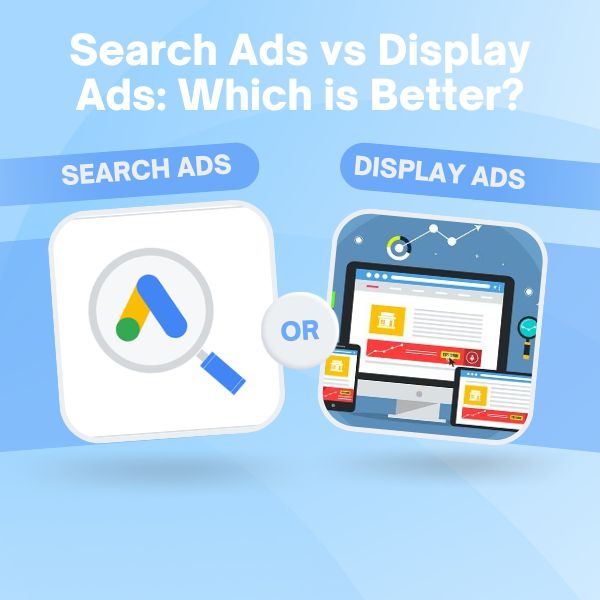
Here is a quick recap on the key strengths of each:
Search Ads:
- Laser-focused targeting to users with buying intent
- Higher clickthrough and conversion rates
- Strong performance closer to the bottom of the funnel
Display Ads:
- Brand awareness at scale through visual storytelling
- Expansive reach to cold audiences
- Engages users higher up the funnel
As discussed earlier, search and display complement one another playing unique roles across the customer journey. Neither can fully replace the other.
Display priming sets the stage for future search conversions. Search captures primed audiences demonstrating buying signals.
The brands excelling in digital advertising employ both ad types together in a cohesive omni-channel strategy. This allows engaging users at different touchpoints through their discovery and decision making process.
Rather than choosing one ad format over the other, allocate budget towards search and display in proportion to their strengths at various consumer lifecycle stages. Test and optimize over time to maximize ROI. With the right omni-channel mix, search and display together deliver magic.
In conclusion, search and display advertising work hand-in-hand driving users from discovery to conversion. For help deploying and optimizing an omni-channel Google Ads approach with the ideal display-search blend, rent a fully-managed agency account via Rent Ads Agency's pay-as-you-go service.

Mohamed Fouad is a full-stack web developer and an entrepreneur who's really into advertising. He is the CEO of Rent Ads Agency, a company that helps businesses reach more customers through advertising. He graduated from Stanford University in 2018 and has over 4 years of experience in the tech industry.

